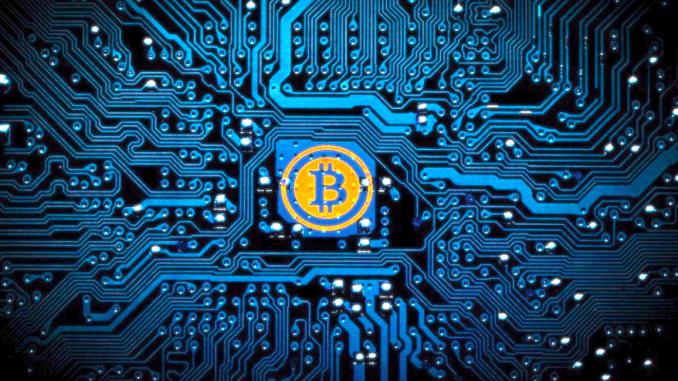
This is a Guest Post by David Gingell, CMO of legal AI company, Seal Software. The piece was inspired by a recent article in Artificial Lawyer about IBM Watson Legal’s view of how AI and blockchain technology will converge.
AI + Blockchain Convergence: We Told You So….
Two of the hottest technology areas are on course to converge in the not-too-distant future.
Blockchain has been around since 2009 and was first defined as part of the code for Bitcoin. Since then it has moved rapidly from being the basis for cryptocurrencies to being seen as the next frontier for digital transformation in pretty much every vertical you can think of, from education to legal, utilities to insurance, healthcare to pharmaceuticals and of course in financial services.
Whilst interest in cryptocurrencies is still high (and the price of bitcoin keeps rising – it hit an all-time high last week of $6,000), mainstream businesses have been turning their attention to how to harness the power of a distributed ledger and single source of truth construct – which is essentially what the blockchain is, to reduce friction in business processes, make them more secure and non-repudiated.

As mentioned, legal is an obvious function that can benefit from this technology and the rise of smart contracts within both law firms and in-house legal has been widely discussed. The idea that the elements of a contract can be stored on the blockchain and the terms automatically executed based on certain events happening (time periods, volume pricing levels, confirmed flight delays for example) is very appealing.
In a parallel technology stream, artificial intelligence (AI) has become a noisy neighbour. Garnering way more headlines than blockchain and its progeny, bitcoin, AI has become mainstream and is rapidly being imbued in the national conscience and on the political agenda.
When Russian President, Vladimir Putin, says ‘Artificial intelligence is the future not only of Russia, but of all of mankind. Whoever becomes the leader in this sphere will become the ruler of the world’, you have to take note.
Now these two technologies will soon converge. Clearly blockchains will start to hold non-structured data and the opportunity to use machine learning models to extract information will be there.
We are already seeing developments in how AI will potentially be applied to contracts which are encoded on a blockchain. This was the basis of the pronouncement Brian Kuhn from IBM Watson Legal made last week [in Artificial Lawyer]. But at the risk of being cheeky, we could say ‘we told you so‘.

That’s the ‘royal we’, as the visionary that identified this convergence more than a year ago was Kevin Gidney, the co-Founder and Chief Technology Officer of Seal Software. Kevin didn’t use the word ‘convergence’, but his intent was clear in his Intelligent Contracts (IC) post, in how he saw AI being applied to the blockchain construct within a contracts framework.
Back then he felt the case for smart contracts was certainly strong, but there were some technical limitations with the functionality, which he pointed out. Areas such as security, accuracy of the encodings and lack of binary representations of some contract clauses needed further thought.
Since then some blockchain solutions have added levels of security to account for the short comings he pointed out. These now provide a granular level of security and control needed for intelligent contracts on a public ledger. In addition companies have taken the smart contract’s logic execution off chain and the consensus methods have changed to allow more information to be handled better. So, the convergence of public blockchains and ‘Intelligent Contracts‘ (ICs) is underway.
To quote from Kevin’s original post: ‘The intelligence comes from the ‘I’ in AI, where a system is taught to continually and consistently recognise and extract key information from contracts, with active learning based on users’ responses, both positive and negative, to the extractions and predictions made.’
So, whilst ICs use some of the underlying methods of blockchain and the ability to store immutable information or actionable events within a block that smart contracts do, they also take into account the real and pragmatic task of first encoding a contract onto a blockchain, recognising that not all clauses can be absolute (e.g. try coding ‘best efforts’ onto the chain) and then being able to dig insight out of the data stored on the chain.
For example, using the power of Seal to extract insight out of the unstructured data on the chain, a lawyer could be presented with very valuable information to decrease the amount of work required to reach an agreement. How a counterparty lawyer has negotiated contracts in the past can be identified, what types of language and clauses are more likely to lead to a successful outcome, and the lawyer can be presented with a draft contract based on terms from a clause library.
In the sense that AI and machine learning will be applied to getting data on to the blockchain, identifying specific clauses and driving insight out of the encoded data, then convergence is right around the corner, just as Kevin said it would, one year ago.
[ Thanks to David for his article. If you also would like to share your views on AI and Blockchain convergence please drop Artificial Lawyer a line. ]
1 Trackback / Pingback
Comments are closed.